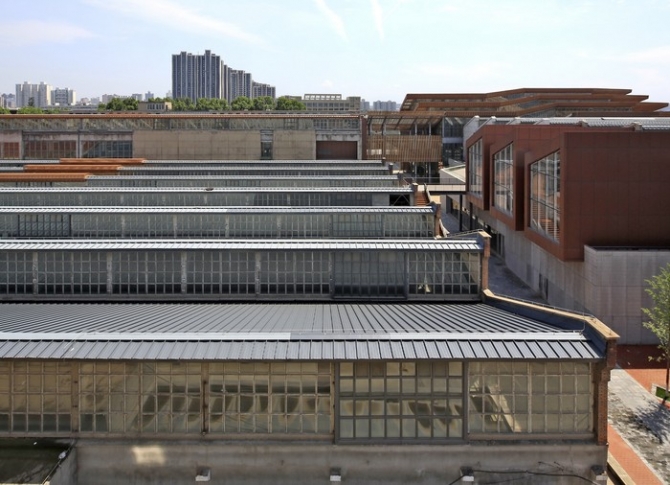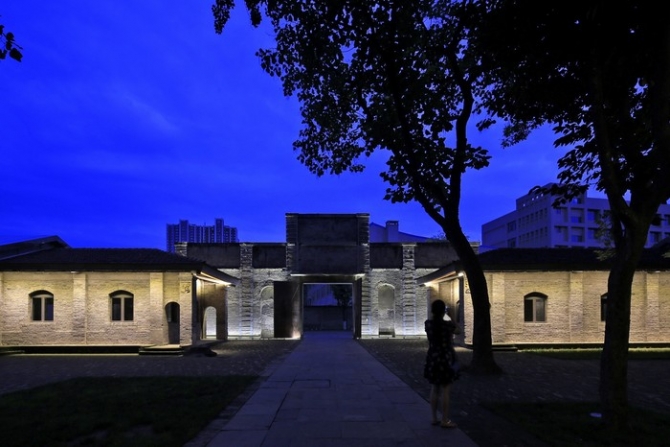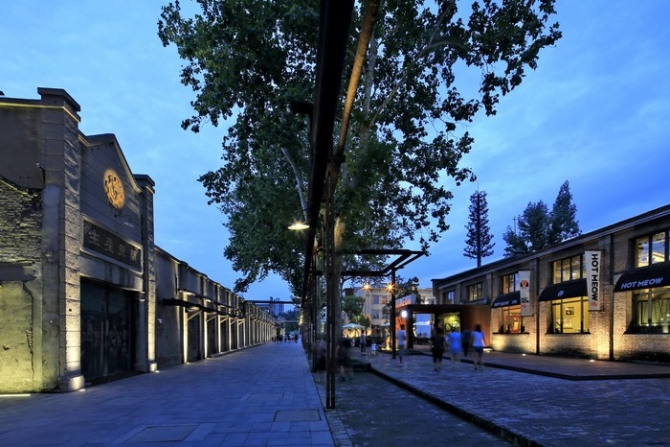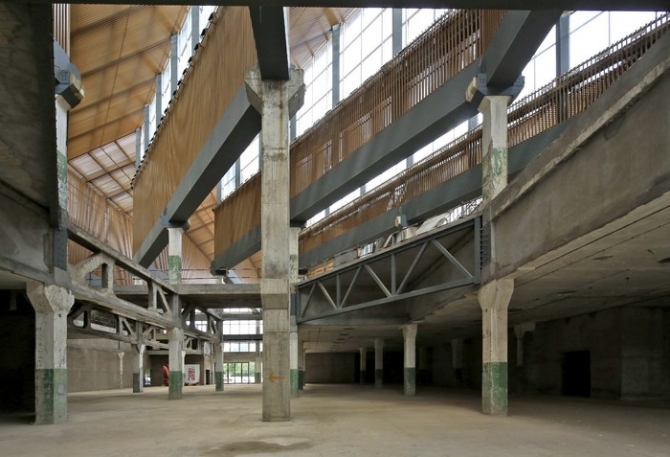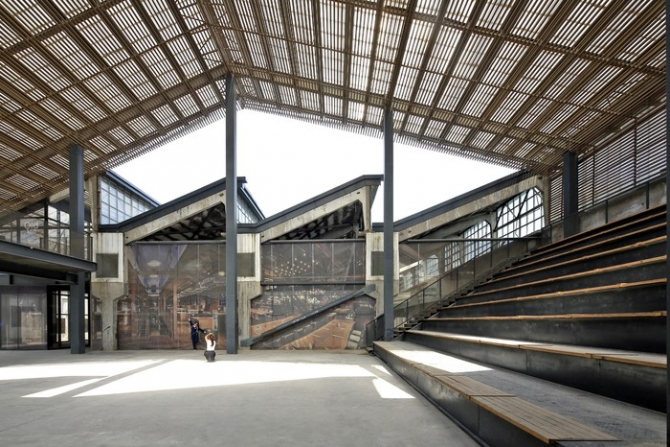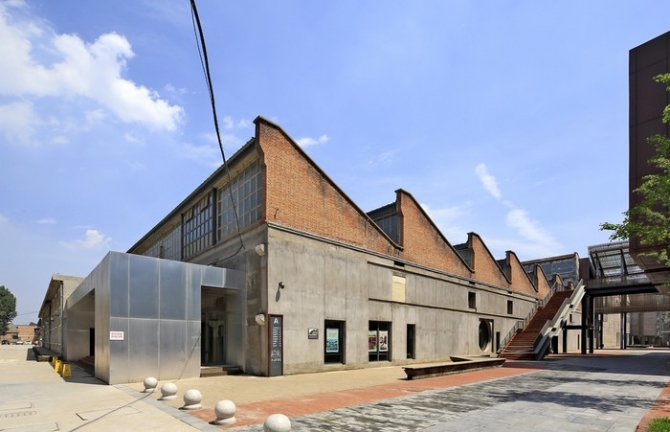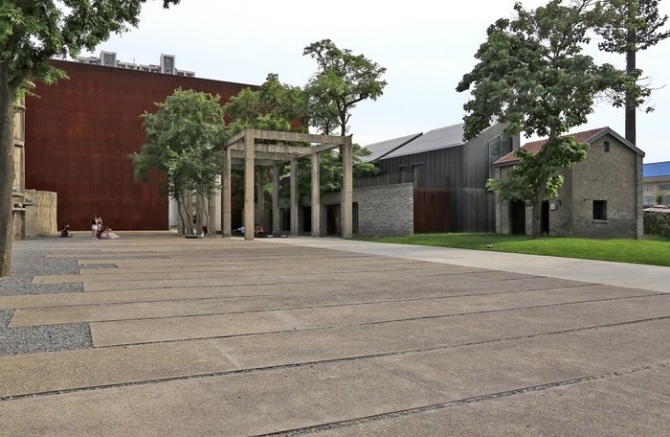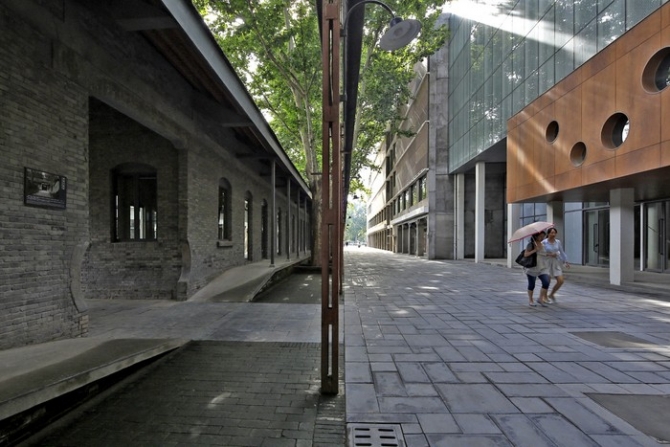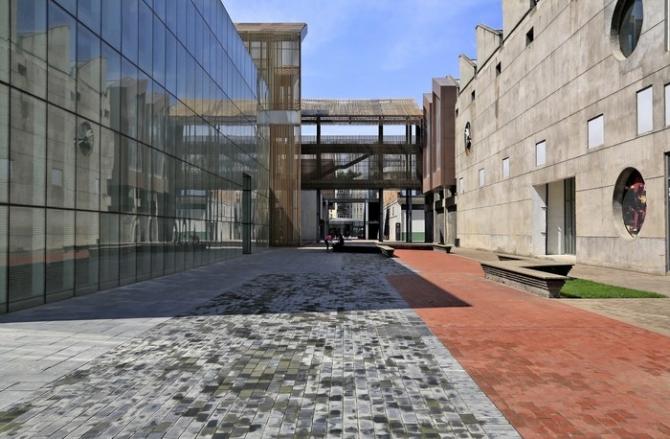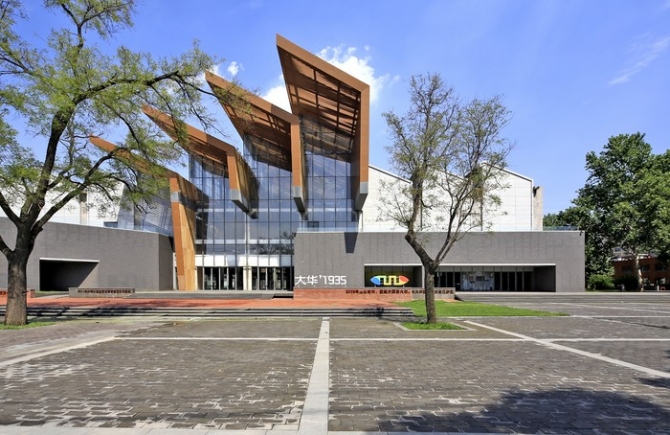西安大华1935Renovation of Xi'an Dahua textile mill's plant and production auxiliary room
创建于20世纪30年代的大华纱厂,地处西安中心地段,在建厂之初代表着当时纺织生产的最高水平,此后的80年间,经历了不断的改造和加建,容纳了各个时期的厂房建筑,也记录了西安这座古都近现代发展的历史段落。同时,工业建筑各时期建造物的高密度共存也有别于民用建筑,如何重新利用这种直白的“密度”成为改造策略的关键。
早期建成的砖木建筑,主要由院落空间组织在一起,尺度宜人,我们采取“谨慎的加法”,对原有建筑进行清理修缮,尽可能保持原有材料、空间和细部的本来面目。同时适当增加采用当代建筑语汇的连廊、小品、构筑物,满足餐饮、休闲、文化等新的使用功能,也提示历史记忆和现代生活的共时性。
建国后历年建成的厂房多为整齐开敞的车间,屋顶为纺织工业建筑典型的锯齿状天窗,周边设有辅助房间。针对这一区域主要采用“积极的减法”策略,结合城市街区所需空间和尺度,形成新的街道和步行系统,并打开部分结构,产生内部街道和公共空间节点,为产生丰富的城市生活提供了机会。
The Dahua Cotton Mill, founded in 1930s’, records the development track of Xi’an in the 20th century. To transform such a high-density factory into an attractive public place for arts activities and creative offices, the design scheme distinguished the individual buildings with different ages and treated them with different design methods. For the elder ones, those smaller and separated brick-timber buildings, the “careful addition” strategy is used to add some small-scale structure to connect functional spaces and make the courts into café, restaurant and other service facilities. Those huge structures built in recent years are revaluated with their remarkable sawtoothed skylight. By the “positive subtraction” strategy, the original auxiliary rooms are displaced by streets and plazas, which form a new pedestrian system that invites citizen to enter the culture park for culture activities.
项目地点:陕西省西安市
用地面积:84734㎡
建筑面积:89050㎡
设计时间:2011年
竣工时间:2014年
合作建筑师:王可尧、张汝冰、Aurelien Chen(法国)、刘洋、高凡、曹洋、冯君
施工图配合:西北建筑设计研究院、西部建筑抗震设计研究院、西安建筑科技大学土木工程学院


